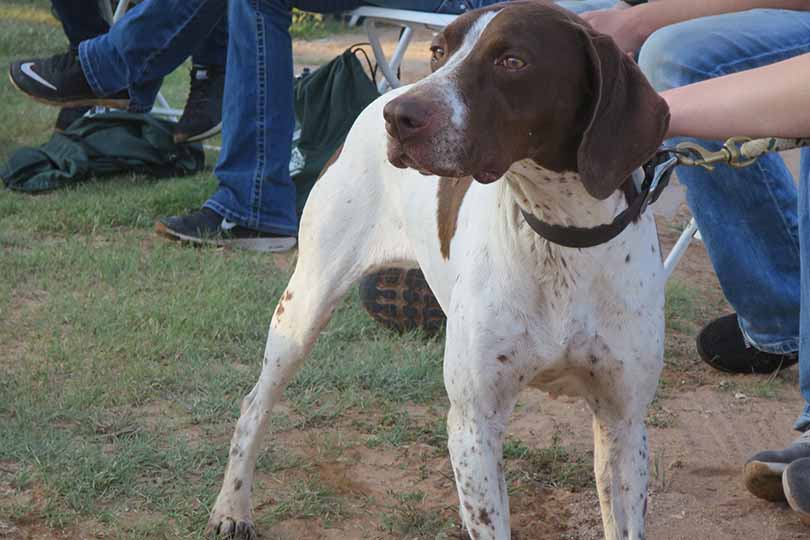By Gary Joiner
TFB Radio Network Manager
Fans of bird dogs believe you can’t go wrong by choosing one of several breeds that work well in Texas. But experienced owners say do your research, and pick a breed that best fits your situation.
“I think you can’t go wrong, as long as you research it a little bit and pick a dog. You know, there are some breeds that require much more activity level than others, and that would be the main thing,” said Russ Hayward of Abilene in an interview with the Texas Farm Bureau Radio Network. “For example, our Brittanys—they’re a closer hunting dog. They don’t have quite the drive that the pointer would, and depending on the terrain that you hunt, that can either be an advantage or a disadvantage. But they all can make good family dogs.”
Hayward was an instructor recently in Coleman County at the Rolling Plains Bobwhite Brigade where bird dogs are part of the wildlife and leadership camp’s curriculum.
“I hope the cadets learn to appreciate the role that the dog plays and be able to observe them. We had a hunting dog demonstration yesterday where they actually got to see a point and a retrieve and the hunting scenario demonstrated,” Hayward said. “That’s kind of the hook, if you will, that usually gets more people interested in the sport after they come to realize how important, how beautiful and how graceful the dogs are. It’s not so much about the harvest. For many people, it’s about watching the dogs work.”
Hayward has owned Brittanys and pointers. He said he believes a dog’s instinct plays a dominant role in its likely success in the field.
“It’s mostly instinct. I really wouldn’t want to put a percentage on it, because I think that’s part of the breeding process. You know, some have more instinct for it than others. I would say it’s a very large portion of instinct and then, basically, commands, depending on whether you’re looking at a field trial dog or a typical hunting dog,” he said.
What is the most popular bird dog breed in Texas right now? Hayward said his experience points to pointers.
“What I have seen in limited observation is that the pointers are probably a little more prevalent in the past. But I think all of the dogs, the diversity of dogs, is kind of going around. I see more and more different breeds as we get around a little bit,” he said.
The two radio programs featuring Hayward’s comments can be heard here and here.
“It’s just amazing how they can do what they do as far as smelling the birds, pointing them, going all day and working hard and still be a good family pet, as well,” he said.


GSPs rule.